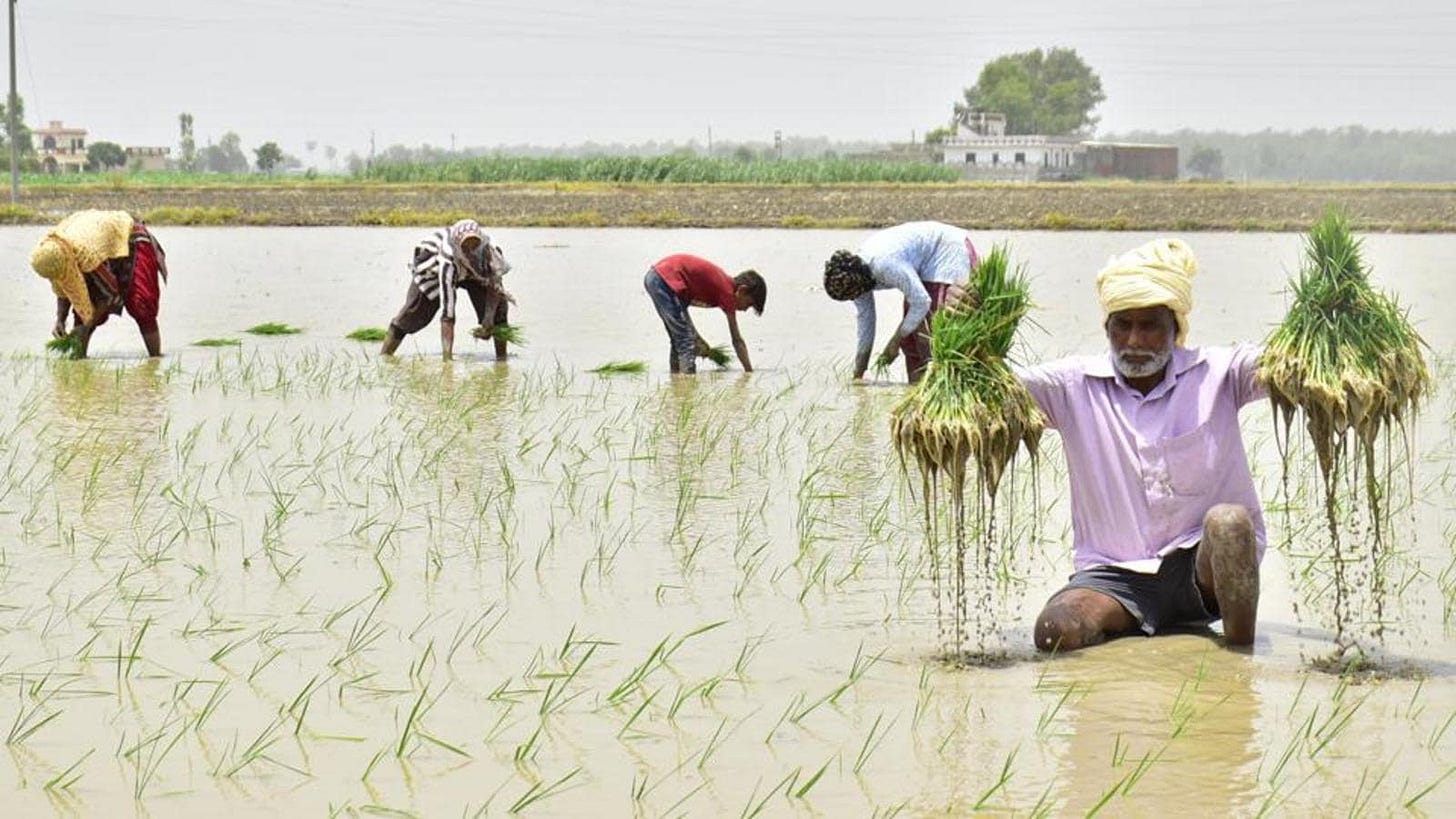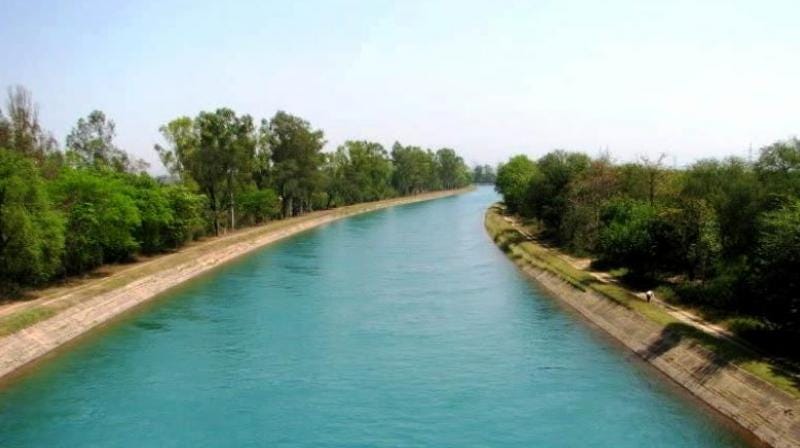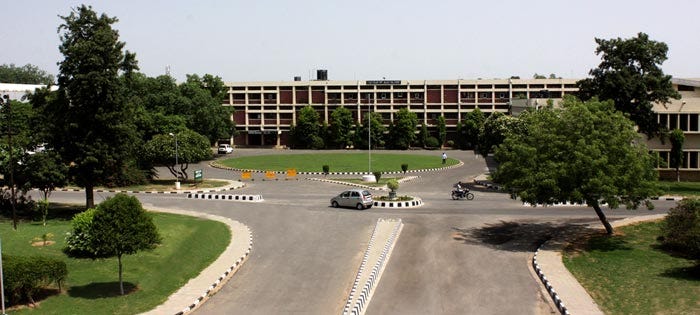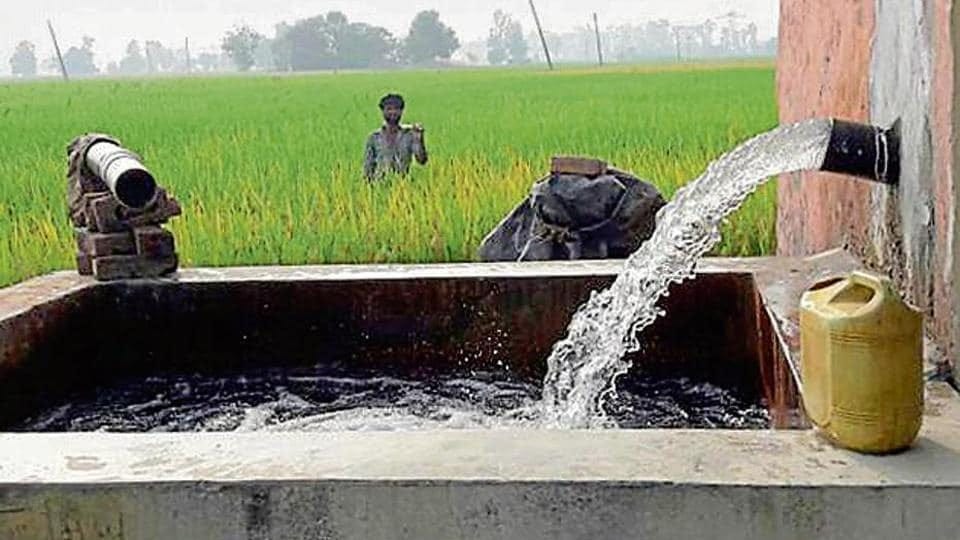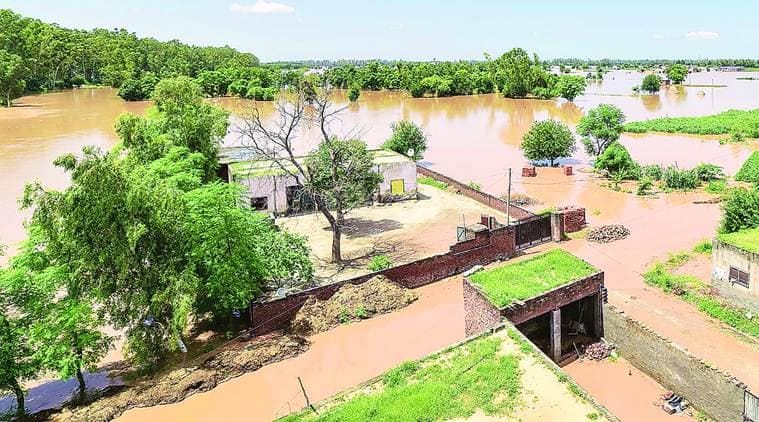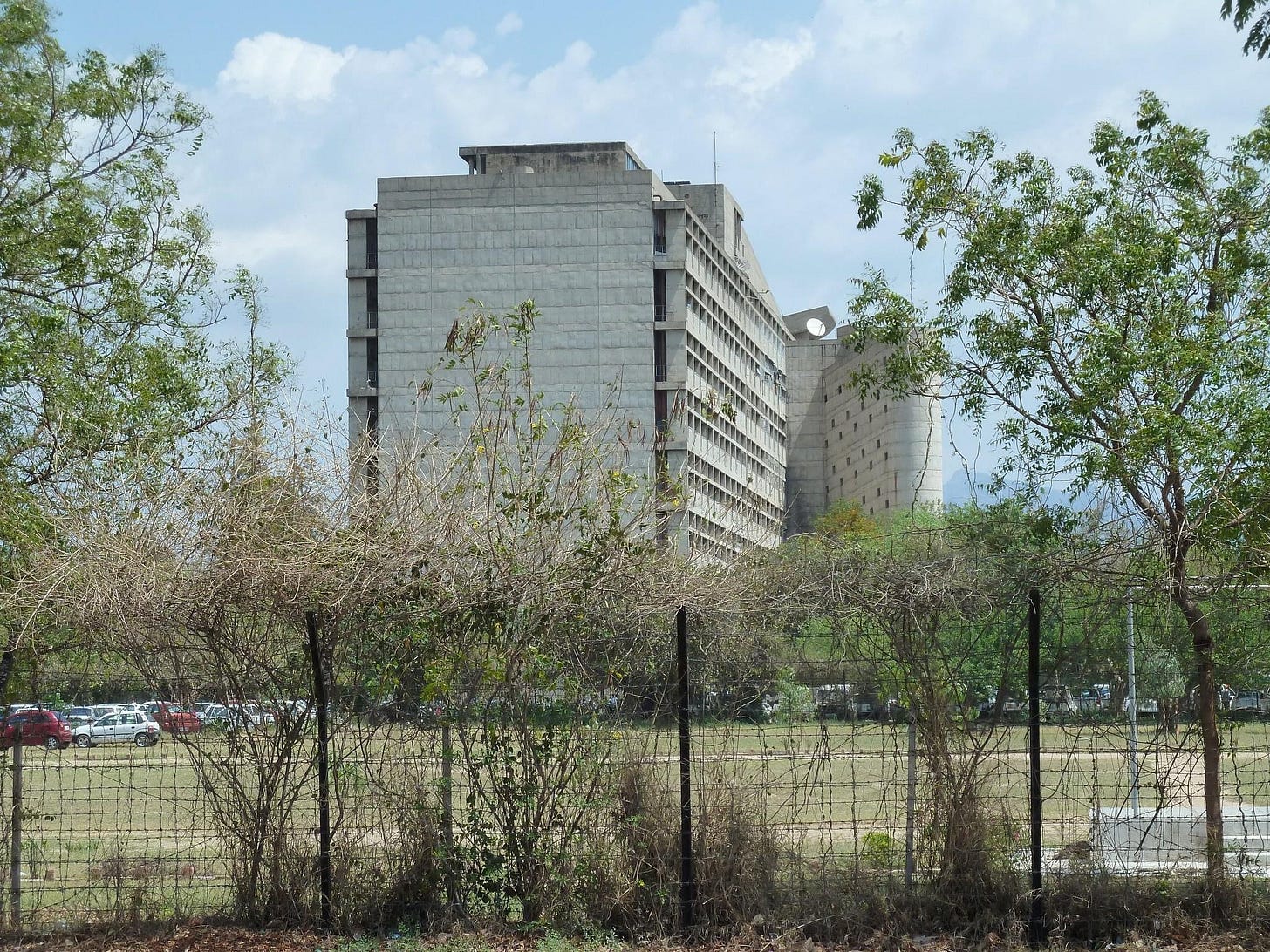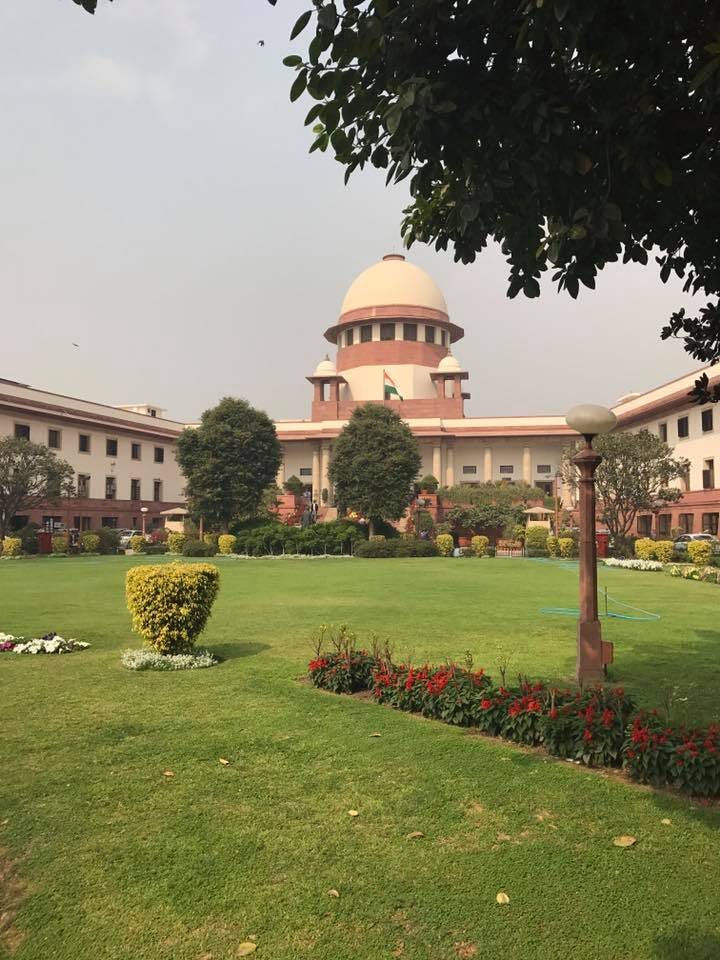Paddy Irrigation Needs 4 Feet Depth of Water— is PAU Ludhiana Saying So?
Paddy the "Water Guzzler" of Punjab—Questioning the PAU Ludhiana Statistics.
Revisiting Punjab's Water Consumption Amid Legal Debates
While the Punjab River Waters issue is back in the news, following the SYL Canal case being taken up by the Supreme Court of India, most of the discussion is centred either around rhetoric or in the apportioning of blame for the blunders committed by Punjab’s extant political leadership since 1947. While this animated discussion continues to rage, fingers are also being directly and indirectly pointed by anti-Punjab forces at the Punjabi farmer for cultivating the paddy crop, which is often described as a water guzzler.
The Objective and the Axiomatic Figures
The objective of this article is not to justify the extent of paddy cultivation, and therefore, the high water consumption in Punjab, nor is it to build up a case against agricultural diversification in favour of millets, pulses, and oil-seeds. The aim is to delve into some key figures and statistics that have been consistently quoted to blame Punjab for over-exploiting its scarce water resources—figures that have been accepted as axioms without critical examination by agricultural scientists, economists, political leaders, bureaucrats, judicial tribunals, and independent experts and journalists. Ironically, these figures have been provided by none other than experts from our own venerable Punjab Agricultural University, Ludhiana, which has been headed in the past decades by some of the leading agricultural scientists and economists not only of the state but also of the entire country.
Questioning the Ubiquitous Water Consumption Figure
It is often stated that the production of 1 kg of rice requires the consumption of 1,400 litres of water. Punjab produces anything between 12 to 13 million tonnes of rice (which is approximately 20 million tonnes of paddy) every year. This figure has been quoted as recently as in Sunday’s (14 October) Chandigarh edition of "The Indian Express."
Verifying Water Consumption Through Reverse Calculations
We thought it would be instructive to verify this commonly cited statistic by approaching it from the reverse angle. It's also important to underscore at this stage that only a quarter of the land in Punjab is irrigated by canals, the remaining being irrigated by electric or diesel tubewells.
Paddy Cultivation: A Key Activity with Variable Factors
Paddy cultivation remains a significant agricultural activity in Punjab, India. The state contributes a major share to the country's total paddy production. However, it should be noted that specific numbers can vary from year to year due to various factors like weather conditions, government policies, and market demand. As per one estimate up to September, 2022, the following figures emerge. For the latest estimates from Punjab Government agencies and PAU Ludhiana, please refer to the footnote1. But the essence of the two is essentially the same.
1. Area Under Cultivation: The area under paddy cultivation in Punjab has generally ranged from around 2.5 to 3 million hectares, which is approximately 6.2 to 7.4 million acres.
2. Gross Paddy Produce: The gross production of paddy in Punjab is estimated to be over 20 million metric tonnes in a typical year, although this number can fluctuate.
3. Yield Per Acre:
· In kilograms: The average yield can vary but is often around 3 to 4 metric tonnes per acre (approximately 3000 to 4000 kgs per acre).
· In quintals: This would translate to around 30 to 40 quintals per acre, on the higher side.
Please note that these figures are approximate and can vary due to a variety of factors such as climate, irrigation facilities, and agricultural practices.
Testing the PAU Figures
The figures we've mentioned—1,400 litres of water to produce 1 kg of rice and Punjab producing 12-13 million tonnes of rice annually—bring attention to the broader issue of water usage in agriculture, particularly in paddy cultivation which is known for being water-intensive.
Water Consumption for Rice: The figure of 1,400 litres of water for 1 kg of rice is often cited and is based on the water footprint of the crop, which includes water used for irrigation, evaporation, transpiration, and the water incorporated into the crop itself. This is a significant amount and has long-term implications for water sustainability, especially for a state like Punjab where groundwater depletion is a serious concern.
Paddy to Rice Conversion: It's important to note that paddy is the unhusked grain, and rice is what you get after milling the paddy. The conversion efficiency generally ranges between 60-65%. So if Punjab produces around 20 million tonnes of paddy, it would translate to about 12-13 million tonnes of rice, aligning with the figure that have been usually mentioned.
Calculating Water Usage:
If Punjab produces 12 million tonnes of rice, that's 12,000,000,000 kgs.
At 1,400 litres per kg, that would mean 16.8 trillion litres of water would be used for rice production alone in the state.
Since most of the water availability figures are expressed in MAF (Million Acre Feet), it is pertinent to mention here that this is equivalent to 13.62 MAF of water2. To put things in context, the total water availability in the Ravi-Beas Waters by the Eradi Tribunal of 17.17 MAF of which anything between 8 to 8.6 MAF goes to Rajasthan and it’s the remaining portion over which Punjab and Haryana are locked in a grim battle.
The proposed state-wise allocation by the Tribunal was as follows:
Punjab: 4.22 MAF
Haryana: 3.83 MAF
Rajasthan: 8.6 MAF
Delhi: 0.2 MAF
Jammu & Kashmir: 0.65 MAF
There were also provisions for some water to be stored for future use and other allocations, but these are the main allocations for the states involved.
The Tribunal's assessment and proposed allocation have been subjects of debate and litigation, especially given the dynamically changing hydrological conditions and water demands of these states. Nonetheless, if you compare the estimated water requirement for paddy cultivation (approximately 13.62 MAF, as per the earlier calculation), it is a considerable volume in the context of the water resources estimated to be available in the Ravi-Beas system.
While this must be weighed against the water sourced from tube-well irrigation, the volume of 13.62 MAF may simply not be available in Punjab. This casts doubt on PAU's calculations, specifically the often-cited statistic that 1 kg of rice consumes 1,400 litres of water.
Let’s examine whether this calculation reasonable or credible?
On the High Side: Critics argue that the 1,400 litres per kg figure might be on the higher side and that modern irrigation techniques can reduce this number.
On the Low Side: On the other hand, some believe that the figure could be an underestimation, especially when accounting for water wasted due to inefficient practices.
Our View: While the 1,400 litres per kg figure serves as a useful benchmark for discussion, it shouldn't be accepted as gospel truth. Although the statistic is valuable for underlining the need for more sustainable agricultural practices, particularly in water-scarce regions, it should continually be refined through ongoing research, factoring in advancements in irrigation technology and other water-saving methods.
So, while the numbers might not be exact, they are useful for understanding the scale of the issue. There's an ongoing debate on water efficiency in agriculture, but regardless of the exact figures, there's a consensus that sustainable water usage needs to be a priority for Punjab's agricultural sector.
Delving into Simple Calculations for Water Use in Paddy Fields
Now, as we stated before, let's approach this from another direction. One acre in Punjab equates to 4,840 square yards, where one yard is equal to 3 feet. If water is used to irrigate this area multiple times for paddy cultivation, it prompts questions about the total water required on a per-acre basis in litres. Given that one acre comprises 4,840 square yards, one also wonders to what cumulative depth, in feet, this water would flood the field under paddy cultivation. Let's delve into some simple calculations to understand this better.
Let's break down the calculation step-by-step. We'll start with the figure of 1,400 litres of water required to produce 1 kg of rice.
Assumptions:
Average rice yield per acre in Punjab is about 3 to 4 metric tonnes (or 3,000 to 4,000 kg) per acre, as per available data.
For simplicity, we'll use an average yield of 3,500 kg of rice per acre for the calculations.
Water Required per Acre in Litres:
3,500 kg of rice per acre would need: 3,500 kg×1,400 litres/kg=4,900,000 litres/acre3,500 kg×1,400 litres/kg=4,900,000 litres/acre.
Water Required in Terms of Depth:
Area of one acre in square feet: 4840 square yards/acre×9 square feet/square yard=43,560 square feet/acre4840 square yards/acre×9 square feet/square yard=43,560 square feet/acre.
1 cubic foot of water contains 7.48 gallons, and 1 gallon is approximately 3.78541 litres. Therefore, 1 cubic foot of water is 7.48 gallons×3.78541 litres/gallon=28.3168 litres7.48 gallons×3.78541 litres/gallon=28.3168 litres.
Total water in cubic feet for an acre: 4,900,000 litres÷28.3168 litres/cubic foot=173,105 cubic feet/acre4,900,000 litres÷28.3168 litres/cubic foot=173,105 cubic feet/acre.
Depth in feet: 173,105 cubic feet÷43,560 square feet=3.97 feet173,105 cubic feet÷43,560 square feet=3.97 feet.
So, based on the average figure of 1,400 litres of water per kg of rice, and an average yield of 3,500 kg of rice per acre, you would require approximately 4,900,000 litres of water to irrigate one acre of paddy field in Punjab. This would flood the field to a depth of approximately 3.97 feet, say 4 feet of water depth over the entire area under the paddy cultivation.
It's a very simplistic nad rudimentary calculation and the real-world figures can vary due to many factors, but this should give a ballpark figure for the water requirements in paddy cultivation. However, as it is often said “It’s better to be approximately correct than to be precisely wrong.”
Considering Water Loss and Varied Paddy Types
These may just be approximate figures, and critics can always find fault with them. They might argue that a lot of water is lost due to evaporation and inefficiencies in the canals, distributaries, and field channels. While some of these factors are relevant, considering that tube-well irrigation accounts for roughly 75% of irrigation in Punjab, we cannot attribute significant proportionate losses to canal-irrigated paddy. On the other hand, a significant area of paddy cultivation is under Basmati, which consumes proportionately less water.
Is the Entire Paddy Water (13.62 MAF) Lost?
The percentage of water that seeps back into the ground or evaporates can vary widely depending on several factors, including the type of soil, the irrigation method used, the weather conditions, and so on. In general, however, estimates suggest that in flood irrigation systems—which are commonly used in paddy cultivation—roughly 30% to 50% of the water can evaporate or be lost to runoff, while the remaining 50% to 70% may percolate back into the groundwater.
It's crucial to note that these are general figures and can vary. Also, the water that percolates back into the ground isn't 'lost'; it contributes to recharging the aquifer, although it may also lead to other issues like waterlogging and soil salinity if not properly managed.
So, if we consider the 13.62 MAF figure, then based on these general estimates:
About 4.09 to 6.81 MAF might evaporate or be lost to runoff.
About 6.81 to 9.53 MAF might percolate back into the groundwater.
.Again, these are approximate numbers and the actual percentages could be different based on local conditions and practices.
Additional Water Availability Through Rainfall
The average annual rainfall in Punjab is approximately 649 mm. Considering that Punjab has an area of about 50,362 square kilometres, the total volume of rainfall received can be calculated. For this calculation, we arrive at a figure of approximately 21 MAF, as per the calculation given in the footnote3.
Volume in MAF≈21���Volume in MAF≈21MAF
Recharge of Ground Water Through Average rainfall?
As for how much of this seeps into the ground versus how much is lost in runoff, the figures can vary depending on soil type, land usage, and other local factors. However, according to some studies, approximately 50-60% of the rainwater may infiltrate the ground, while the rest could be lost to evaporation and runoff.
Using the approximate value of 21 MAF:
About 10.5 to 12.6 MAF may infiltrate into the ground.
About 8.4 to 10.5 MAF may be lost to evaporation and runoff.
These are, of course, rough estimates and the actual figures would require a detailed hydrological study.
Recharging of Ground Water From River Waters and Canal System Seepage
Seepage from rivers and canals varies significantly depending on numerous factors including the type of soil, depth of the canal, and the velocity of water flow, among others. Estimates suggest that anywhere between 25% to 40% of canal water can seep into the ground before it reaches the intended agricultural fields.
Benefits for the Water Table: Seepage can have a recharging effect on groundwater tables, which is generally a positive aspect, especially in areas where groundwater levels are declining due to over-extraction.
Risk of Water-logging: However, excessive seepage can lead to water-logging in some areas. Water-logging is particularly problematic for agriculture as it can lead to soil salinity and reduced agricultural productivity. In Punjab, some areas are prone to water-logging, and this has been a concern for agricultural sustainability.
So, while seepage can help in replenishing the groundwater table, the effects are twofold: it can be beneficial in water-scarce areas but problematic in areas prone to water-logging. Effective water management strategies are essential to maximise the benefits of seepage while mitigating its negative impacts.
Challenging the Established Narrative
Be that as it may, the thrust of our article and these elementary calculations is not to flaunt rudimentary knowledge but to give the reader an understanding of the complexities involved, from the multiple factors at play to their varying impacts—both positive and negative. For instance, seepage could either recharge groundwater or contribute to water-logging. The point is that making accurate estimates requires a multi-disciplinary and inter-disciplinary approach. This is crucial not only for understanding the scale of water depletion in Punjab but also for presenting authoritative and verified statistics that can strengthen Punjab's case in judicial forums, including the Supreme Court of India. Therefore, the Punjab Government urgently needs to establish an independent panel. While this should include experts from Punjab Agriculture University in Ludhiana, it should not be limited to them; it needs to encompass a broader range of expertise to ascertain the exact figures.
A Call for Prompt and Responsible Action
In the absence of this, anecdotal figures will continue to not only dominate the popular media and shape the narrative but also capture the imagination of people within and outside Punjab. This gives a talking point to the anti-Punjab and anti-farmer lobby, who are always looking for an opportunity to hit below the belt. We sincerely hope that early action in this regard will be forthcoming soon—the Punjabi farmers cannot continue to be vilified on the basis of these unsubstantiated figures. On the other hand, if this figure is even approximately accurate, it serves as a serious alarm bell, necessitating effective and expeditious remedial measures. Otherwise, the desertification of the Land of Five Rivers could be a matter of a few years, rather than decades.
The following figures derived from the Punjab Agriculture Department offer specific data that generally aligns with the broader estimates mentioned earlier, with some variations to be expected based on annual differences, advances in agricultural techniques, and other factors.
Area under Cultivation: 31.93 lakh hectares (approx. 78.9 lakh acres) is indeed a substantial area under rice cultivation for Punjab, aligning with the idea that the state is a major contributor to India's paddy and rice production.
Average Yield in Quintals: The yield range of 27 to 35 quintals per acre is consistent with what we indicated (30 to 40 quintals per acre).
Average Yield in Tonnes: They have mentioned an average yield of 6.9 tonnes per hectare for 2020, which converts to approximately 2.8 tonnes per acre. This is somewhat lower than the 3 to 4 tonnes per acre range we had mentioned, but it's within a reasonable range, considering annual variations and other factors.
Rice Production: The figure of 11,779.300 Ton th for 2020 is specific and would roughly align with the 12-13 million tonnes of rice produced annually in the state, which we had mentioned as an estimate.
Paddy to Rice Conversion: It's worth noting that paddy production and rice production are not the same; rice is what you get after milling paddy. The conversion efficiency generally ranges from 60-65%, which means paddy production would be higher than rice production.
In summary, the figures from the Punjab Agriculture Department are generally consistent with the estimates we provided earlier, allowing for annual variations and other influencing factors.
To convert the water consumption into Million Acre-Feet (MAF), we'll have to work with unit conversions. The water consumption for rice production in Punjab is calculated to be 16.8 trillion litres, as per your earlier note.
1 Acre-Foot is equal to approximately 1,233,481.84 cubic meters or 1,233,481,840 litres.
First, let's convert the total water consumption to cubic meters: 16.8 trillion litres=16.8×1012 litres=16.8×1012 litres×(1 cubic meter /1000 litres)=1.68×1010 cubic meters16.8 trillion litres=16.8×1012 litres=16.8×1012 litres×(1 cubic meter /1000 litres)=1.68×1010 cubic meters
Next, we'll convert this to Acre-Feet: 1.68×1010 cubic meters×(1 Acre-Foot /1,233,481.84 cubic meters)≈13.62×106 Acre-Feet1.68×1010 cubic meters×(1 Acre-Foot /1,233,481.84 cubic meters)≈13.62×106 Acre-Feet
So, the annual water consumption for rice production in Punjab would be approximately 13.62 million Acre-Feet (MAF).
This is a significant volume of water and would be a substantial portion of the water resources available to the state. For context, you may wish to compare this number to the total water availability in Punjab in terms of MAF to get an idea of how large a percentage is being used for paddy cultivation.
We can use the following equation:
Volume in MAF=(Area in sq km×106 sq m/sq km×Depth in m)×(1 AF/1.2335e+6 cu m)×(1 MAF/1e+6 AF)Volume in MAF=(Area in sq km×106sq m/sq km×Depth in m)×(1AF/1.2335e+6 cu m)×(1MAF/1e+6 AF)
Volume in MAF=(50362×106×0.649)×(1 AF/1.2335e+6 cu m)×(1 MAF/1e+6 AF)Volume in MAF=(50362×106×0.649)×(1AF/1.2335e+6 cu m)×(1MAF/1e+6 AF)
Volume in MAF≈21���Volume in MAF≈21MAF




